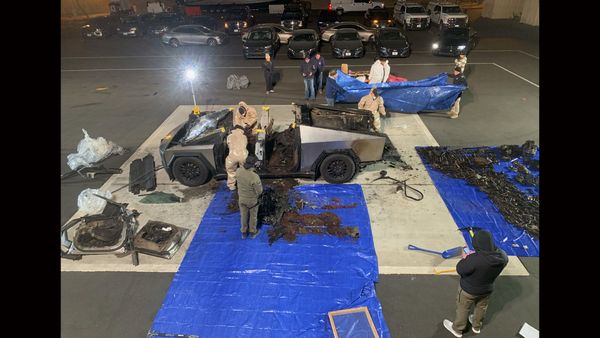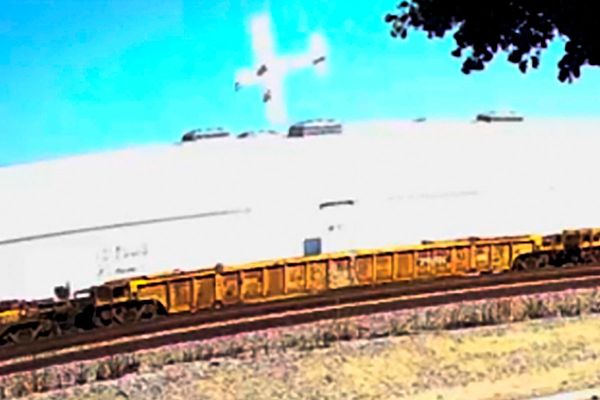
After logging a good 40ish hours of gameplay, earning all the achievements and exploring practically every square inch of Ubisoft Toronto’s beautifully realized Atlas (as well as discovering most of its alluring mysteries), I’ve come to a singular, unflinching conclusion: I love Starlink.
To be honest, this development has taken me a little by surprise, mostly because when it comes to toys-to-life experiences, I’m a bit of a Skylanders diehard. In my humble opinion, neither Lego Dimensions nor Disney Infinity managed to match, let alone surpass, the lofty standards set in place by Toys for Bob’s string of family-friendly Diablo-lite masterpieces. Being a late-to-the-party effort, I was naturally interested in Ubisoft’s Starlink, if only for respecting the guts (or naivete?) it takes to release a AAA title in this now-decimated retail space. I was healthily skeptical for the very same reason. Could this ambitious spaceship exploration game, or No Man’s Skylanders as some have jokingly dubbed it, make any kind of meaningful splash within a dormant genre? Coming from this hooked writer, the answer is a resounding ‘yes’.
Consider Starlink to be a brilliant combination of No Man’s Sky, Starlancer, Ratchet & Clank, Vanark, and classic kids’ film Flight of the Navigator. Or to get real obscure with things (as if we haven’t already), it’s basically the ultimate modern reimagination of PS1 toys-to-life originator ZXE-D Plasmalite, with more spaceships and less mechs, obviously. Modular, scannable collectibles meet openworld galactic roleplaying, and make no mistake, Starlink is an RPG first and shooting game second. This beautiful quest is all about leveling up various skills, upgrading weapons and managing an ever-evolving army of helpful allies, all while a giant hunk of customizable plastic sits atop your controller. The battling is almost besides the fact, which is a little funny, because combat is really damn good. But we’ll get to that in a bit.

The well-crafted narrative tells the story of a ragtag fleet of unlikely space cadets on a mission to rescue their father-figure leader St. Grand from an invading alien force known as the Legion. Considering what could have easily been a cookie-cutter cast, the game’s characters are surprisingly likable. The colorful group runs the gamut from entitled-but-humorous social media celebrity and sentient-microorganism-alien to an ex-metal band drummer and even a reformed thief. They chat, bicker and banter throughout the experience via natural and fitting dialog, adding some excellent personality to the mix and encouraging that we actually care about what’s happening. Sure, main villain Grax looks like he was pulled from a Majora’s Mask concept art meeting, but I’m not complaining.
Starlink basically presents you with a full solar system of different planets to explore, and while you can simply tackle the main campaign missions without seeing everything that each floating rock has to offer, you’d be doing yourself a huge disservice (and you probably wouldn’t get too far without being obliterated by waves of increasingly stronger Legion). Worlds are filled with tons of interesting flora and fauna, and scanning all of the bizarre extraterrestrial species, like you would in No Man’s Sky, is half the fun. I spent a good deal of time reading all the logged data entries as I stumbled across myriad strange discoveries, and I must say, big hats off to the writing team. The lore presented here is really well-crafted. Starlink’s excellent design and attention to detail touches just about everything in Atlus, from the lumbering Sasquid and noxious Goulcrabs to the wrinkle-faced Snood (“…bards sing of their vengeful behavior, as though they are striking back at a world to which they don’t belong.”).
The basic gameplay loop (which is a tad repetitive but extremely satisfying and addicting) revolves around entering a planet’s atmosphere, staking Alliance claim by building observatories, refineries, armories and workshops, and clearing the entire area of invading Legion. This requires the obliteration of what are known as Extractors, which look like giant, evil Soulcalibur swords. Getting rid of these pesky mining parasites weakens formidable Primes, four-legged mobile Legion creatures that go around planting Extractors. So as you fight these alien forces and build more outposts (which give you valuable resources like map reveals, Electrum currency, weapon/ship mods and battle allies) you start to take the planet back in a kind of resource management meta-game. Early on, there’s always new Extractors and Primes landing on planets, as well as Imp Hives to clear and infection to eradicate, so you constantly need to revisit destinations to fight off new threats and reclaim territory. As you do all of this, an Alliance meter fills up and tells you how much of the planet you’ve taken back, and it’s an ongoing process that conveys a constant sense of maintenance and progression, even when you’re not glued to the story missions.

When you’re fighting Legion and building outposts on planets, you’re in a sort of hovering mode, which has you piloting your ship close to the ground, zooming and strafing around. When you exit a planet’s atmosphere and enter space proper, navigation leans more toward traditional flight simulation, granting full 360 degree movement, and of course, the ability to do a barrel roll (I’m reviewing the Xbox One version, so no Starfox missions for me). Whether you’re in zero gravity or zipping around terrestrially, controls are tight, responsive and a joy to helm. This extends to combat, which is an absolute blast. Fighting Legion and Outlaws (these guys pop up all over the map to trap you and cause general mayhem) always feels tactical, and I often found myself seeking out altercations just to scratch that itch. The Primes, which resemble walkers from Alien Front Online, as well as the massive Dreadnaught enemy bases, are especially fun to take down. Combining elemental weapon effects for awesome combos is also great, as is timing shield blocks and dodges. Starlink actually controls more like an FPS when in hover mode, and it makes for some seriously strategic maneuvers.
Speaking of which, there’s a ton of great customization in Starlink, allowing you to tweak just about every aspect of your gameplay experience. Mods of cascading rarity can be earned, fused and applied to every ship and weapon, enabling you to tailor your strengths and weaknesses with attributes like increased rate of fire, range, energy cost, damage, degree of fire kickback, amount of XP earned and elemental defense. And of course, each ship component can be individually leveled up, and that includes the characters themselves, who each have an extensive skill tree to fill out that can improve their Overwatch-style ultimate moves. Got to hand it to Ubisoft for not infusing this aspect of the game with microtransactions. It would have been way too easy to do, so I’m happy that mod acquisition is entirely done in-game.
Let’s talk toys, shall we? First, do you even need them? The answer is no, because you can buy everything digitally. But if you do decide to collect them (and I wouldn’t blame you), they can be rather bulky in practice, and since the starships are mounted directly to your controller and not placed on a seperate Skylanders-esque portal, their weight and general in-the-way-ness can become rather noticeable. One ship in particular, the Zenith, can really get in the way because of its low-hanging wings, resulting in annoying thumb-scrapes as you navigate with the analog sticks. Wings can be switched out, by the way, so this is never a lasting problem. On that same note, because there’s no standalone NFC pad, switching starships can be somewhat laborious and inconvenient. It’s not nearly as easy as swapping Skylanders or Disney Infinity figures. In fact, due to the way the ships snap on and off the controller mount, I constantly felt like I was on the verge of cracking pieces in half. The accessories on the other hand, like weapons and wings, are a total breeze to switch out, but the ships themselves can be a real pain, and the mount makes the Xbox button practically impossible to reach without looking.

That’s not to say I don’t love the toys—the ships are well-designed and look great on a shelf (I think there’s even special stands Ubisoft sells that display the models as if they were in flight). They even have awesome Skylanders Lightcore-style illumination, manifesting as glowing cockpits, thrusters and even pulsing weapon inards. I do wish that more of the ships’ architecture lit up, but I’m sure that was kept to a minimum, both to reduce retail costs and controller battery consumption. The character figures, on the other hand, leave a lot to be desired. One of the reasons I loved Skylanders so much was because of how the big, bright, detailed characters translated to significant toys, all of which had tons of personality. The Starlink figures lean more toward a sort of tabletop game collectible aesthetic, like those miniatures from Blood Bowl or Warmachine. In other words, they’re extremely tiny, probably so they can fit inside the ships, and are sadly not that impressive.
So while I love the modular physicality of Starlink’s toys-to-life component, I think I would have preferred a more straightforward portal with larger characters that didn’t need to necessarily fit inside of to-scale starships, or get shoehorned onto a controller, for that matter. Maybe more lighting features could have been incorporated had Ubisoft decided to go this route, and perhaps it would have also allowed the team to go all out on the characters and release figures that were more representative of the big personalities inside the game. I’m sure kids will get a kick out of having an imposing spaceship on their gamepad, so perhaps I’m just missing the mark here.
In the end, I only have a few complaints about Starlink. One is that I feel like I needed more—content, missions, extras—but that could have been because I played on Normal and was way too powerful by the end of the campaign. The last few boss battles were over in a matter of seconds, so I definitely should have played on Hard or Very Hard to make things more challenging. That said, there doesn’t seem to be any kind of New Game + mode where you can keep all of your outposts and fight a new, more difficult wave of Legion, and that’s a little disappointing. More planets to explore and more missions to tackle would have been awesome, so I really hope that Starlink gets some quality DLC at some point. My other complaint is that, as cool as the toys are, I think the game could have been stronger without them. Perhaps without the need to tie everything into physical (and digital add-on) objects, the devs could have spent more time expanding the universe and adding more to the already solid foundation.
Yes, Starlink is a bonafide toys-to-life title in many respects, if more of a hybrid flavor than past efforts, and that will probably scare certain people away. But even if you strip out all the expensive extras, you can still play everything digitally (the deluxe digital edition includes all ships, characters and weapons), and on top of that, the game is simply really, really good. Congrats to the Toronto team for creating such a fun experience, and I sincerely hope that we’ll be getting additional Atlas adventures in the future.
Platform: PlayStation 4, Xbox One (reviewed), Switch
Developer: Ubisoft Toronto
Publisher: Ubisoft
Release Date: October 16, 2018
Price: $59.99 (standard) $79.99 (deluxe edition)
Score: 9/10
Disclosure: Ubisoft provided review product for coverage purposes







